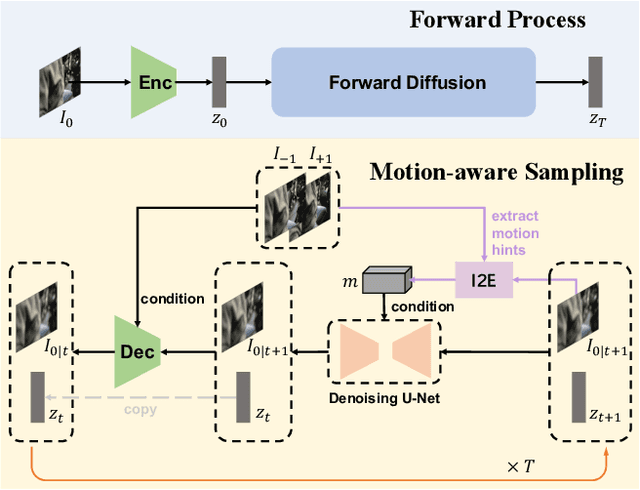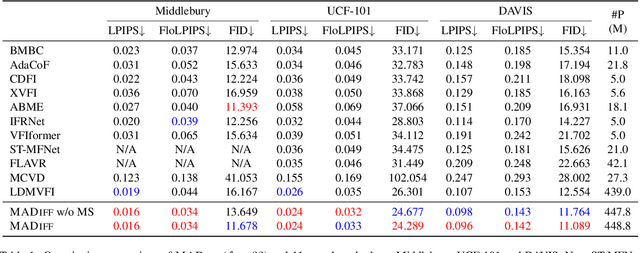Yijie Yu
Bilateral Event Mining and Complementary for Event Stream Super-Resolution
May 16, 2024



Abstract:Event Stream Super-Resolution (ESR) aims to address the challenge of insufficient spatial resolution in event streams, which holds great significance for the application of event cameras in complex scenarios. Previous works for ESR often process positive and negative events in a mixed paradigm. This paradigm limits their ability to effectively model the unique characteristics of each event and mutually refine each other by considering their correlations. In this paper, we propose a bilateral event mining and complementary network (BMCNet) to fully leverage the potential of each event and capture the shared information to complement each other simultaneously. Specifically, we resort to a two-stream network to accomplish comprehensive mining of each type of events individually. To facilitate the exchange of information between two streams, we propose a bilateral information exchange (BIE) module. This module is layer-wisely embedded between two streams, enabling the effective propagation of hierarchical global information while alleviating the impact of invalid information brought by inherent characteristics of events. The experimental results demonstrate that our approach outperforms the previous state-of-the-art methods in ESR, achieving performance improvements of over 11\% on both real and synthetic datasets. Moreover, our method significantly enhances the performance of event-based downstream tasks such as object recognition and video reconstruction. Our code is available at https://github.com/Lqm26/BMCNet-ESR.
Motion-aware Latent Diffusion Models for Video Frame Interpolation
Apr 21, 2024



Abstract:With the advancement of AIGC, video frame interpolation (VFI) has become a crucial component in existing video generation frameworks, attracting widespread research interest. For the VFI task, the motion estimation between neighboring frames plays a crucial role in avoiding motion ambiguity. However, existing VFI methods always struggle to accurately predict the motion information between consecutive frames, and this imprecise estimation leads to blurred and visually incoherent interpolated frames. In this paper, we propose a novel diffusion framework, motion-aware latent diffusion models (MADiff), which is specifically designed for the VFI task. By incorporating motion priors between the conditional neighboring frames with the target interpolated frame predicted throughout the diffusion sampling procedure, MADiff progressively refines the intermediate outcomes, culminating in generating both visually smooth and realistic results. Extensive experiments conducted on benchmark datasets demonstrate that our method achieves state-of-the-art performance significantly outperforming existing approaches, especially under challenging scenarios involving dynamic textures with complex motion.
The Detection of Thoracic Abnormalities ChestX-Det10 Challenge Results
Oct 22, 2020
Abstract:The detection of thoracic abnormalities challenge is organized by the Deepwise AI Lab. The challenge is divided into two rounds. In this paper, we present the results of 6 teams which reach the second round. The challenge adopts the ChestX-Det10 dateset proposed by the Deepwise AI Lab. ChestX-Det10 is the first chest X-Ray dataset with instance-level annotations, including 10 categories of disease/abnormality of 3,543 images. The annotations are located at https://github.com/Deepwise-AILab/ChestX-Det10-Dataset. In the challenge, we randomly split all data into 3001 images for training and 542 images for testing.
 Add to Chrome
Add to Chrome Add to Firefox
Add to Firefox Add to Edge
Add to Edge